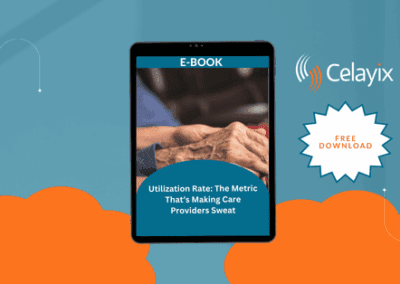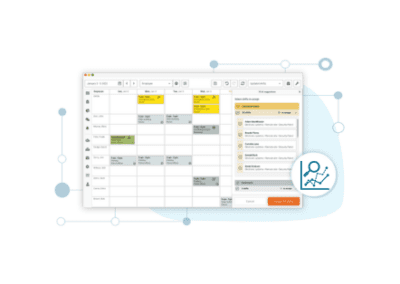Time theft is a common and costly issue for employers. In fact, 49% of US employees and 62% of Canadian employees admit to committing time theft. In the U.S. alone, time theft costs employers more than $11bn per year! This is before factoring in lost productivity and other indirect costs.
43% of hourly workers have admitted to exaggerating the amount of time worked during their shift.
SOFTWARE ADVICE
What is time theft?
Time theft is the result of employees manipulating processes in order to receive pay for hours that they have not worked. While there are multiple methods of time theft, they all result in the employee receiving pay, without having worked to earn them.
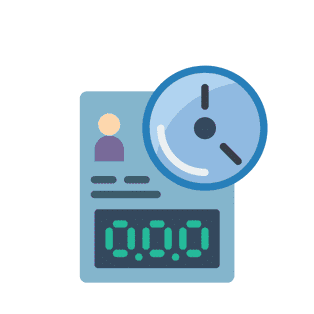
More often than not, employee time theft is an issue for employers who manage hourly workers. Hourly workers often have to complete timesheets for their work, making it relatively easy for them to exaggerate their hours. While there might only be slight adjustments, these false claims add up throughout the year. When you consider that 43% of hourly workers have admitted to exaggerating the amount of time worked during their shift, you can see how big a problem this is.
One of the biggest problems of employees committing time theft is that it often goes unnoticed. Unless one were to actively go looking for occurrences of time theft, it is easy to miss. Time theft itself certainly is an issue, but more than that, it is often related to other workplace issues. The longer the issue continues, the worse it gets, and the more costly it becomes.
Forms of Time Theft Your Employees Might be Engaging In
1. UNAUTHORIZED CLOCKING IN AND OUT
Employees typically get a co-worker on their level to clock in or out for them when they’re not in attendance. For example, they will get a co-worker to clock in if they are running late. This is called buddy punching when a co-worker might clock an employee in when they aren’t there.
Stealing time at work in this way costs companies in the United States hundreds of millions in payroll expenses each year. Since payroll is one of the highest costs for employers, buddy punching could result in sizable expenses for many businesses.
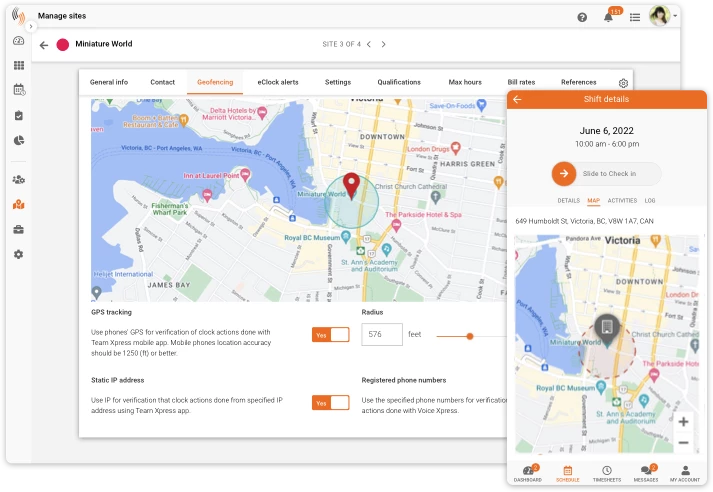
Improperly clocking a worker in or out is a deliberate offense that should result in discipline or termination after corrective measures have been taken and ignored. You should choose a time and attendance system that makes it difficult, if not impossible, for employees to clock in or out for one another. With software such as Celayix, you can only clock in on your specific mobile phone. This reduces the occurrence of buddy punching.
2. DISAPPEARING ON THE JOB
In some work environments, particularly large offices and outdoor work sites, it can be easy for an employee to stroll off unbeknownst to a busy supervisor. It could take time for this theft of company time even to be noticed; unfortunately, it can seriously impact operational efficiency.
Companies with large offices and even recreational areas for employees are more likely to encounter this issue than other workplaces. Since the COVID-19 pandemic, many companies have been working remotely. Remote work offers employees many distractions, from chores and errands to leisure activities.
To identify this problem, you should monitor which employees’ productivity has decreased. If you suspect an employee stealing time at work, keep closer tabs on that individual. If your employees are remote, random check-ins by video conference could help ensure they are at their workstations.
3. MISUSING BREAKS AND PERSONAL TIME

Your employees should be encouraged to take a break. It’s great for their mental health and productivity. In many cases, you’re also legally required to give your employees paid break time during their shifts according to the Labor Standards Act (FLSA).
It’s also okay for employees to occasionally handle personal business from the office. A healthy work environment allows people to balance their life priorities with their work. As long as productivity doesn’t suffer, there’s no harm in employees taking a break during company time.
However, problems only arise when employees abuse their lunch breaks and personal time, taking extended breaks, numerous smoke breaks, and causing issues that cost thousands.
For example, a team member who makes phone calls from work to make an appointment is probably not stealing time at work. You don’t need them to clock out to make a quick call. On the other hand, an employee who regularly browses social media, does their online shopping, chats with their friends, and drives to the local coffee shop a couple of times daily is.
There are two things you should consider about this type of time theft:
- How much are employees working while they’re on-site? You could pay for hours’ worth of work each day that never gets done.
- What is the cost of workers using work-related equipment for personal purposes? Employers pay for resources like ink and paper, internet access, and utilities. Non-business use of workplace property can result in extra expenses.
4. DISTRACTIONS FROM WORK COMPUTERS
Millions of jobs consist of employees working on a desktop computer or laptop. If you provide this equipment to your employees, they could abuse their usage to steal time at work.

The most effective way to restrict computer usage would be to place a companywide block on any external websites that enable the misuse of computers. This is extra IT work that may or may not be worth it to you, but it will increase productivity if employees only have access to perform work tasks on their work computers. Choosing an employee monitoring software provider can help you stay on top of what employees do while they’re on the clock.
5. EMPLOYEES ROUNDING TIME UP
Different time and attendance software could round time differently. Some systems may round up to the nearest 15 minutes (0.25 hours), while others round time in three-minute increments (0.05 hours). These rounding systems provide employees with another opportunity to steal time at work.
Employees sometimes stall the clock before officially clocking out to round up their time, especially if they feel they may fall short of their daily hour requirements. According to the U.S. Department of Labour, you can legally make time-rounding adjustments for your employees. If you can demonstrate that an employee is intentionally stalling to round their time up, you may be able to fix the distorted timesheet.
6. MOBILE PHONE USAGE

Mobile phones are the ultimate distraction, no matter who you are. Employees may be too preoccupied with their phones on the job, causing a decline in their work performance.
According to a study by Udemy, about one-third of millennial and Gen Z workers spend an average of two hours a day on their phones. Employees might get distracted browsing social media, making long phone calls, texting friends, playing games, or shopping online.
You should have a cell phone policy and ensure employees understand your phone usage expectations. Enforce the policy with write-ups for repeated warnings and potential termination if employees don’t improve their behavior.
Impact of time theft on your organization
FINANCIAL COSTS
As mentioned above, time theft is very costly to your business and your bottom line. When it comes to hourly workers, every minute counts, literally. While individual employees may see it as an hour here and there when you have 50+ employees, that will add up very quickly.
Hourly employees who exaggerate their time cards generally steal 4.5 hours per week. If that employee earns $20 per hour, you’re losing $4680 to time theft every year!
EMPLOYEE CONFLICTS

More often than not, employees engaging in time theft can make other, hardworking employees resentful. As you can imagine, this resentment can lead to frustration, which can lead to conflict in the workplace. These conflicts impact the entire workforce and can lead to other issues with morale, absenteeism, teamwork, and possibly even turnover.
LOST PRODUCTIVITY
Finally, time theft ultimately leads to lost productivity. While it sometimes involves employees claiming pay for work they have not completed, it also involves employees stealing company time. This means they are using company time for their own personal needs.
This impacts production, operations, customer service, and other crucial business functions. This could further add to the financial costs of time theft to your organization.
How to Prevent Time Theft
Now that you understand how time theft occurs, and what impact it can have on your organization, it’s important to take steps to mitigate risk.
CREATE A CLEAR TIME & ATTENDANCE POLICY
Time theft generally results from poor time and attendance procedures. If this is the case for your company, it’s time to create a clear time and attendance policy. This policy should cover clocking in and out procedures, break periods, and the use of company time for personal tasks. It should also detail the disciplinary actions that will be used to discourage time theft.
Once the policy has been created, be sure to educate employees on it, and incorporate it into your employee handbook. It can help to also ask your employees to sign a declaration saying that they have read and understood the policy. It is also important to follow through on these new procedures from the beginning so that employees know how serious time theft is.
IMPROVE EMPLOYEE ENGAGEMENT
More often than not, employees who carry out time theft are not well-engaged. Employees who struggle with motivation find it much easier to pad timesheets or use company time to complete personal tasks. Well-engaged employees on the other hand are generally punctual, honest, and committed to their work.
As an employer, there are many steps you can take to improve employee engagement across the board. Regular check-ins with employees, regular feedback, and other incentives can be used to improve morale. If you’d like to read more about improving employee engagement for your employees, check out our blog post here!
USE TIME TRACKING SOFTWARE
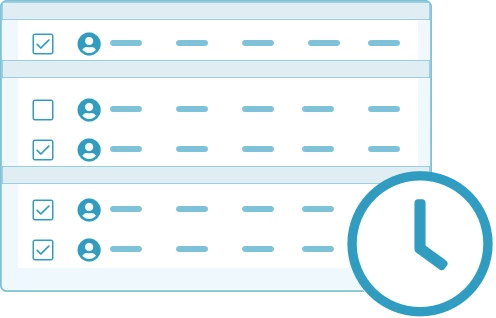
The best way to remove time theft from your organization is to change the way you are tracking time and attendance. Time and attendance software can improve every element of your process, from how employees clock in/out, to how attendance is matched to hours worked. Celayix time and attendance software is best-of-breed, with a mobile app, automated attendance matching, and GPS geofenced check-ins.
Video: How to Prevent Time Theft with Celayix Time & Attendance Features
- Mobile App – With the Celayix mobile app, employees can check in and out of shifts directly from their mobile phones. This will prevent buddy punching of any kind.
- Automated attendance matching – with Celayix, data from employee check-in/outs can be used for payroll. The data can easily be exported and sent directly over to payroll, reducing the risk of payroll errors. It also tracks clock in/out data down to the minute, rather than rounding up/down to the nearest 15 minutes. This ensures that you are only paying for the time that your employees actually work.
- Finally, Celayix offers GPS-verified geofenced check-ins. This means that employees on the road or out in the field can only check into their shifts once they are actually on site. This prevents the padding of timesheets by mobile workforces.
If you’d like to hear more about Celayix’s time and attendance solutions, and how we can help you eliminate time theft, reach out to a solutions advisor here!



